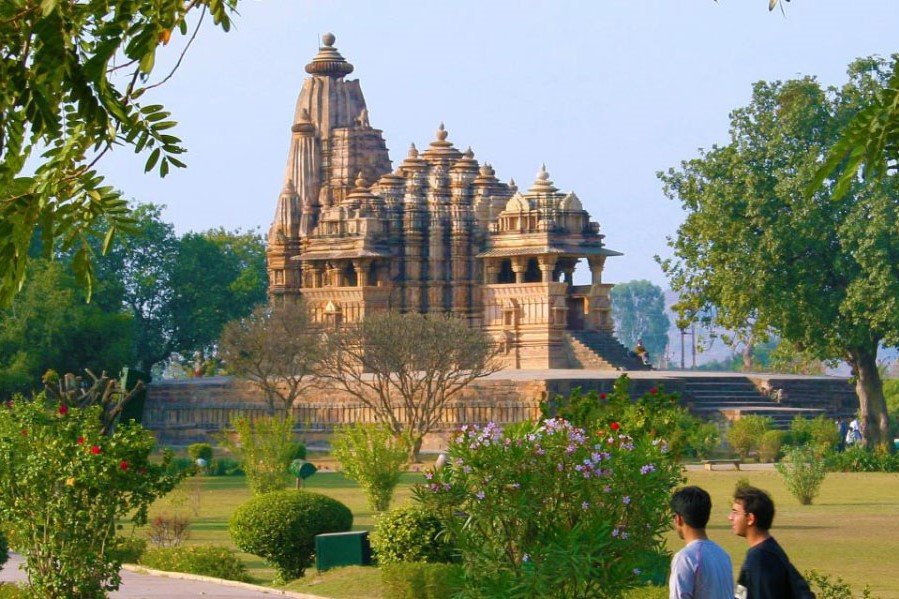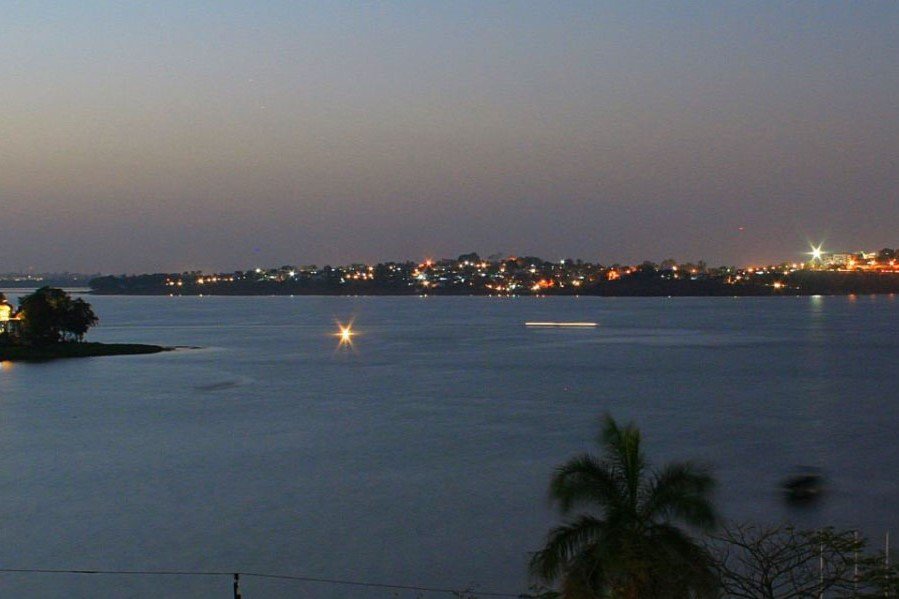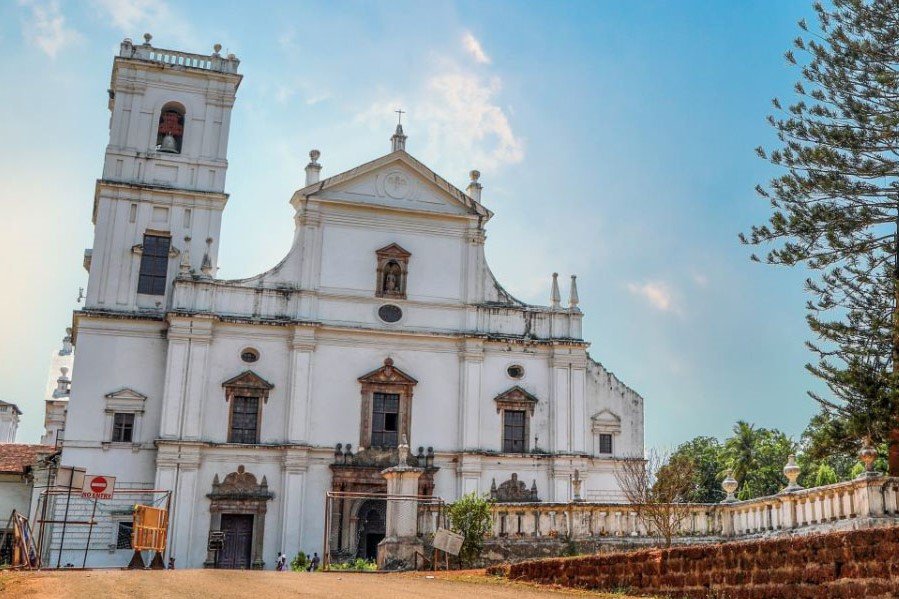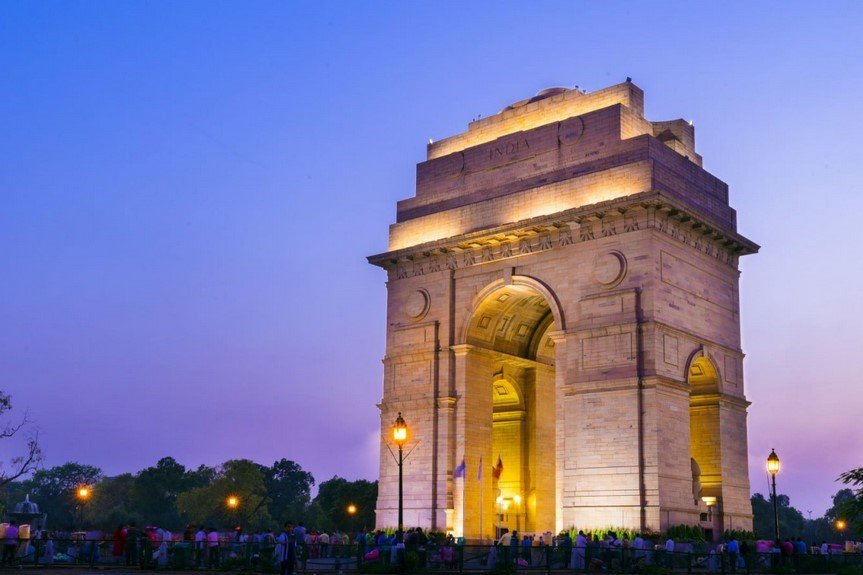
Delhi is the city that may surprise you at first but will soon engulf you in a string of new experiences, leaving you entwined with its culture and people. Ruled by some of the most powerful emperors in the history of India, Delhi has transformed into a soulful city embracing each culture with open arms. The capital of world’s largest democracy, Delhi as a city that bridges two contrasting worlds. While Old Delhi is a labyrinth of mysterious narrow lanes, haveli’s and majestic mosques, the imperial city of New Delhi is composed of spacious, tree-lined avenues and imposing government buildings. The city has gradually evolved to become a window to India’s unique cultures and ethnicities.
The Eternal city, offers visitors a sumptuous banquet of history and heritage seamlessly in tune with its transformation as one of the world’s fastest growing and largest metropolises today. Monumental architecture here is redolent of the creative genius of successive historical era. Delhi’s kaleidoscopic core is ripe for many more cinematic ventures to be staged here. From the opulent expanse of Old Delhi to urbane skyscrapers, tree lined avenues, undulating flyovers, ancient bazaars, and the wonderful Delhi Metro, our city is the visual spectacle like none other.
explore experiences
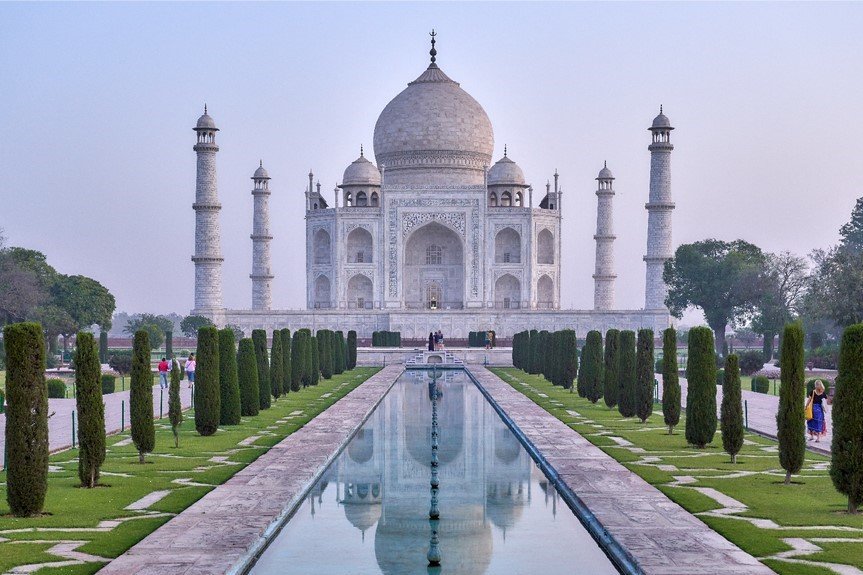
The city of the Taj Mahal, one of the seven wonders of the world, Agra in Uttar Pradesh is India's most popular tourist destination. Steeped in history, this ancient city is dotted with monuments, architectural wonders and beautifully landscaped gardens, which are remnants of the Mughal reign's majestic legacy. The city also enjoys a vibrant culinary scene while preserving its exquisite arts and crafts.
Situated on the banks of River Yamuna, the city, once the capital of the mighty Mughals, stands proudly today with a royal heritage that beckons to one and all. While visitors admire the grand structures here and weave through bustling chowks and bazaars, they can also check into luxurious hotels, shop at malls and plazas, and indulge in contemporary delicacies at upscale restaurants.
Agra finds a mention in the epic Mahabharata, where it is referred to as ‘Agraban’ or an integral part of the Braj Bhumi or the land of Lord Krishna. A lot of significant historical events in the city are said to have unfolded during the reign of Raja Badal Singh, a Sikarwar Rajput king, who is believed to have founded the city in 1475. However, it gained political prominence during the rule of Sikander Lodhi (1498-1517) of the Lodhi dynasty. It was given a new lease of life in 1526 AD, under the reign of Mughal emperor Babur. He was a patron of arts and wanted the inhabitants of the city to adopt the finer things in life. This resulted in the city being filled with skilled craftsmen, artists, statesmen, warriors and nobility. Thus began Agra’s golden age.
Babur’s legacy was carried forward by his progeny, emperors Akbar, Jahangir and Shah Jahan, all of whom added to the city’s grandeur in terms of wealth, patronage and incredible architectural marvels. Agra transformed into a hub of art, culture, learning and commerce. The city’s lip-smacking food, awe-inspiring monuments, and arts and crafts stand as relics of this illustrious antiquity. Its rich repertoire of arts and crafts has seeped into its modern personality too: Agra is a haven for crafts like marble and soft stone inlay work. It is said that Mughal empress, Nur Jahan, personally looked into the development of arts and handicrafts here. It is said that she was an expert in zari embroidery herself.
explore experiences
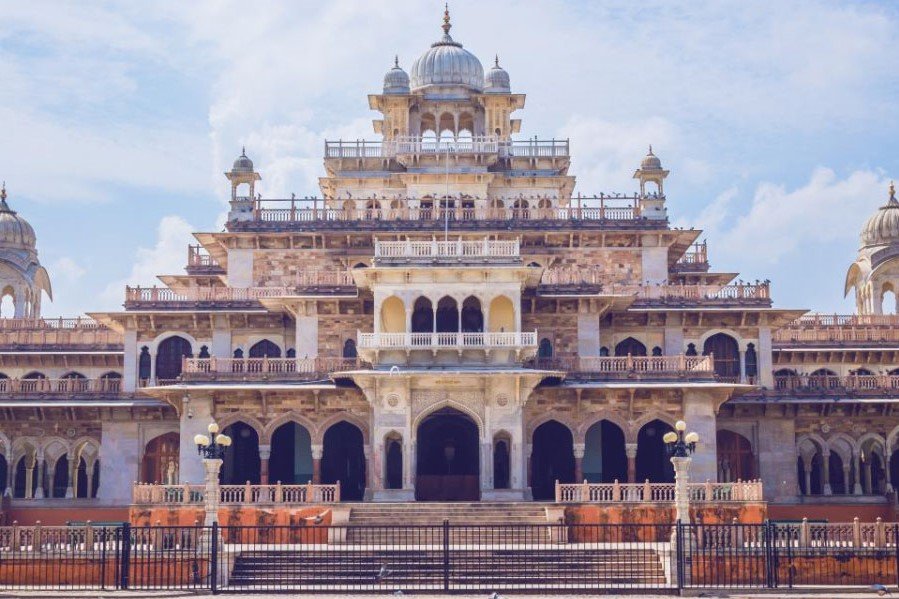
The city of palaces and forts, interspersed with historical monuments and gardens that testify the grandeur of the Rajput kings, Jaipur is the gateway to the royal heritage of India. Also called Pink City, the capital of Rajasthan, remains suspended in time, with its heritage preserved in the overwhelming Hawa Mahal that gazes down at the bustling streets of Johari Bazaar.
A little away from the city centre, which is resplendent with state-of-the-art cinemas/ movie theatres, eateries, multiplexes, museums and parks, lies the arid hilly country dotted with forts that earlier stood as armoured sentinels of Jaipur. The biggest and the most awe-inspiring is the Amber Fort, which leaves one humbled with its expansive fortifications and grandeur.
Founded by Maharaja Jai Singh II in 1727 AD, Jaipur was the stronghold of the Rajputs, who gave it its everlasting legacy in the form of various heritage sites, arts and crafts, culinary curations etc. Typical Rajasthani cuisine, comprising lal maas, dal-bati-churma, ker sangri and other uncountable recipes, all hold limelight in the culinary culture of India. These can be enjoyed in the quintessential Rajasthani style of sitting cross-legged on mats on the floor and digging in in the sumptuous thali, which features up to 20 dishes.
While one can enjoy the various offerings of the city as an outsider, what really sets Jaipur apart is its welcoming spirit that wins you over with its warmth. To symbolise this hospitable culture, the older part of the city was painted pink under the reign of Maharaja Ram Singh in 1876. Although this was done during the British rule when the Prince of Wales came to visit India, many houses are still adorned with the hue to reiterate their signature slogan of 'Padharo Mhare Desh' (Welcome to my Land).
Jaipur was designed by architect Vidyadhar Bhattacharya in the early 18th century. Through the years it has transformed into a bustling metropolis while continuing to retain its old-world charm. Following India's independence from British rule, Jaipur and the principalities of Bikaner, Jaisalmer and Jodhpur came together to form the present state of Rajasthan. Today, thousands of travellers from the world over come to explore its vibrant streets every year, sampling its delicious food and experiencing its rich cultural flavours. They find at every turn a charming confluence of tradition and modernity, old shops rubbing shoulders with new malls without ever detracting from the city's essence.
A kaleidoscope of many moods and hues, Jaipur is also a fantastic shopping destination. From colourful puppets and bandhni sarees to silver jewellery and lac bangles, it offers a host of knick-knacks and souvenirs to take home along with many fond memories!
explore experiences
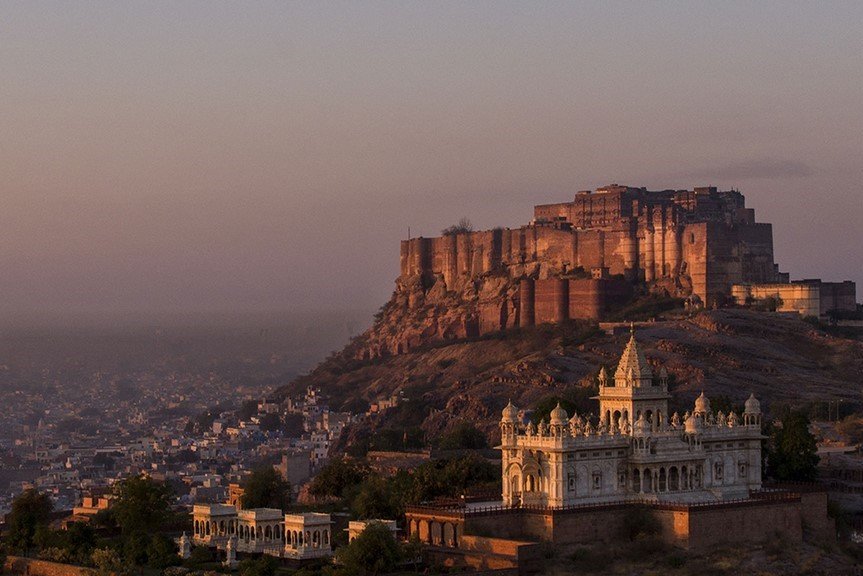
With a sea of sapphire-blue painted houses and guarded by the gorgeous Mehrangarh Fort, the city of Jodhpur, the second-largest in Rajasthan, is an architectural marvel. A labyrinth of medieval lanes, interspersed with vibrant markets, criss-cross the city, which enjoys a languid pace of life.
To experience the soul of the city, head to its bustling bazaars that offer a fine selection of the spiritual Pichwai paintings, Jodhpuri pants or breeches, exquisite bandini or bandhej (tie and dye) sarees, beautiful badla embroidered lehengas and morchang, a popular Rajasthani folk music instrument. The city boasts a busy culinary scene and sampling local delicacies like the savoury pyaz-ki-kachori, the spicy mirchi bada and the thick and sweet makhaniya lassi, is an unforgettable experience.As you explore further, Jodhpur charms you with its rich royal legacy that is evident in notable landmarks like the opulent Umaid Bhawan Palace, the majestic Jaswant Thada and the scenic Mandore Gardens, all of which were built by the city's erstwhile rulers. A 10-km-long wall with eight huge gates divides the old and the new parts of the city, giving tourists an opportunity to experience the unique features of Jodhpur's ancient past rubbing shoulders with its cosmopolitan present.For an authentic Rajasthani rural life experience, tourists can explore Khichan Village, which is a favourite stopover for migratory birds. The evenings here are sheer bliss, when the temperatures of the desert dip and birds glide over the smooth water of the Khichan Bird Sanctuary.Jodhpur was founded by Rao Jodha, the chief of Rathore clan, in 1459. It caters to a wide range of tastes and preferences and hence is one of the most popular tourist destinations of the country.
explore experiences
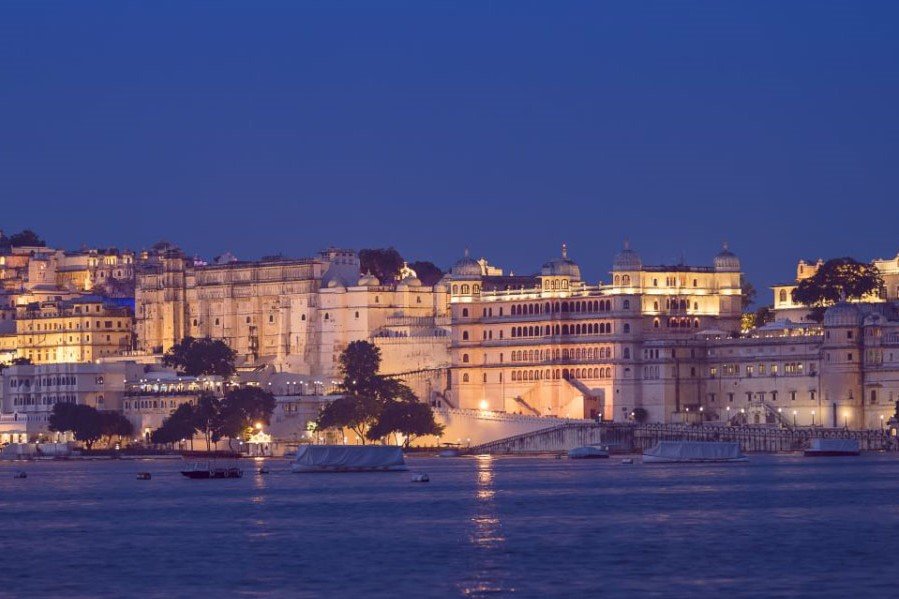
Popularly known as the City of Lakes, serene Udaipur is the crowning jewel of royal Rajasthan. With shimmering lakes visible from almost every rooftop, fairytale palaces, sprawling havelis, revered temples and narrow lanes weaving through colourful markets as ancient as the city's history, Udaipur's charm is unmatched.Founded by Maharaja Udai Singh II in 1559, the city served as the capital of the kingdom of Mewar after Mughal emperor Akbar besieged its earlier power-centre Chittorgarh. Udaipur is also referred to as the Venice of the East, a title it has earned for being dotted with numerous lakes (seven to be precise)! Nestled in the mighty Aravalli range, surrounded by dense forests and craggy hills, and magical sunrises and sunsets turning its lakes into pools of gold, Udaipur is one of the most picturesque destinations in the country. Colonel James Tod of the East India Company, who was also a scholar, aptly described the city as “the most romantic place in the Indian sub continent”.
Visitors can enjoy tranquil boating on Lake Pichola, the largest of Udaipur's lakes, spend a day taking in the jaw-dropping opulence of City Palace, visit the time-weathered temples, shop at the art and curio stalls that line the streets, enjoy Rajasthani folk music and dance performances, taste mouth-watering cuisine or drive out of the city to discover legends hidden in the wooded Aravalli hills and the impregnable forts dotting its surroundings. No wonder then, Udaipur is one of the most popular tourist destinations in the country!
explore experiences
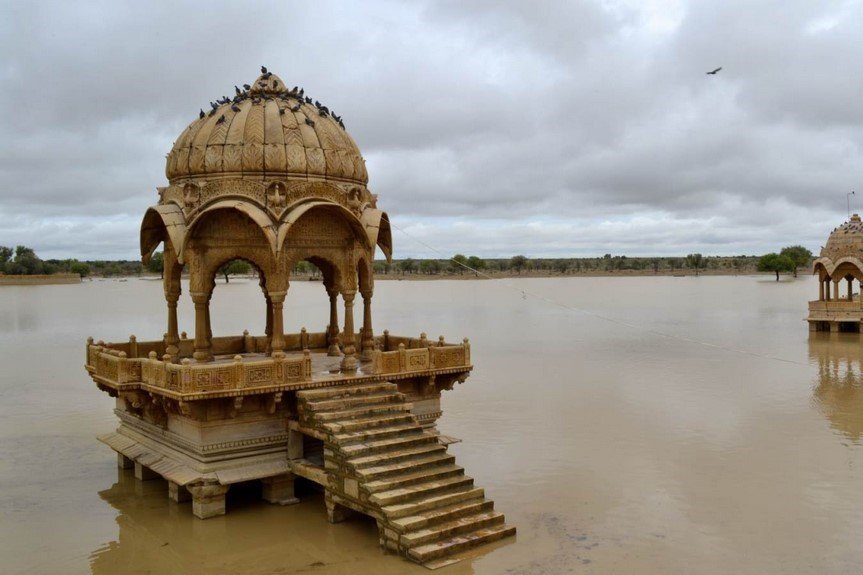
Rolling hills of honey-hued sand dunes, vast barren expanses, contrasting colours and mesmerising historical treasures, make up the stark beauty of the enchanting city of Jaisalmer, in Rajasthan. The city holds the still-inhabited Jaisalmer Fort at its heart, which seems to rise out of the desert like a mirage and looks ablaze as the golden rays of the sun bathe it.
Encircled by 99 bastions, this fairytale-like-fort enthrals you with its grandeur. This far-flung city of Rajasthan invites tourists from across the globe with its intricately carved temples, narrow streets and almost perfectly concealed delights, which can be explored through camel rides amidst the mystic desert. Jaisalmer has a history dating back to the prehistoric period, which is preserved in the Akal Wood Fossil Park. A must-visit is the Tanot Mata Temple, which lies close to the India-Pakistan border and became famous during the 1965 war, when the bombs that fell near it did not diffuse. It has also been featured in the movie 'Border',Legend has it that Rawal Jaisal, the eldest heir of the Rawal of Deoraj, was passed over the throne of Lodurva and his younger half-brother was crowned king. In a quest to redeem himself, he went looking for a new capital when he came across a sage who told him an ancient prophecy. This led to Rawal Jaisal constructing a mud fort in the area in 1156 and naming it Jaisalmer after himself. Jaisalmer literally translates to hill fort of Jaisal. Its location on the ancient trade routes led to the fabled riches and indulgent style of architecture. Jaisalmer is also known for its wood carvings, local artistry and fabulously rich cultural heritage of performing arts.
explore experiences
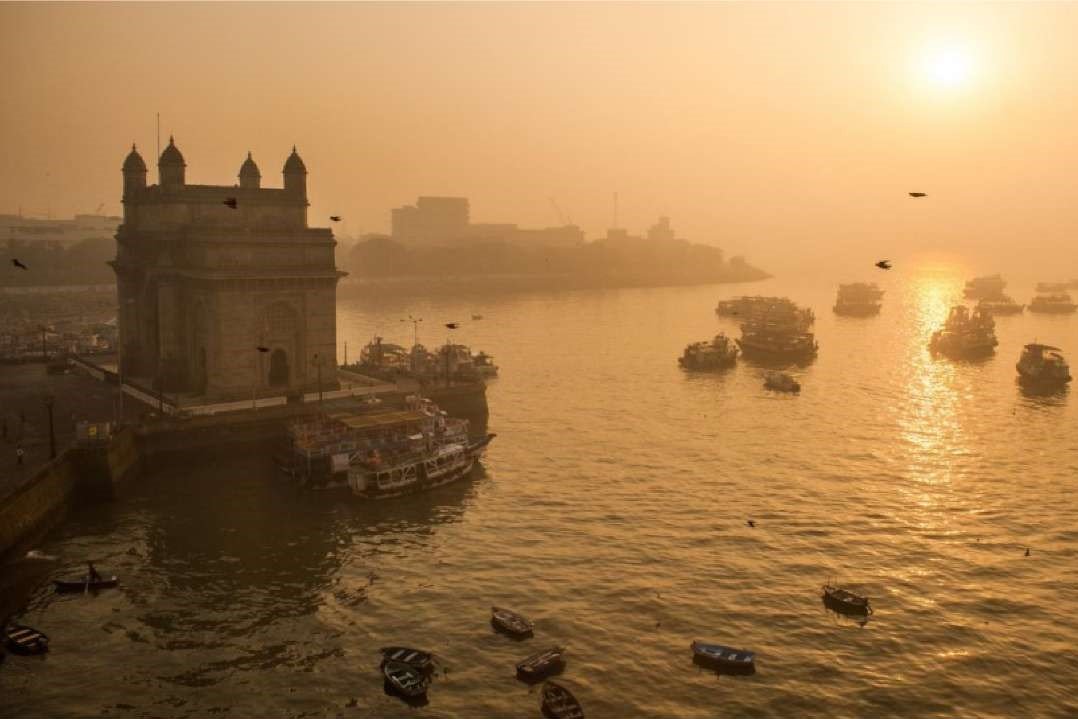
Mumbai, the capital of Maharashtra, attracts dreamers with sky-high ambitions from every corner of the country. It is a unique place where the past is mixed with the future and history meets modernity, a city that lies at the cross section of business and entertainment and beats to a pulsating rhythm of its own. Located by the Arabian Sea, Mumbai is an amalgamation of heritage and culture and glitz and glamour. So from historic art deco buildings, which are recognised by the UNESCO, to plush new-age homes of the super rich, Mumbai has it all!
India's financial capital, Mumbai is home to the most important financial institutions of the country such as the Reserve Bank of India, the National Stock Exchange of India, the Bombay Stock Exchange, SEBI and is the corporate headquarters of numerous Indian companies and multinational corporations. It is also home to some of India’s premier scientific and nuclear institutes.
Mumbai is the epicentre of Hindi cinema thanks to its flourishing filmmaking industry, popularly known as Bollywood. Every year, many new faces arrive in this city eager to make a name for themselves in the glitzy movie world. Mumbai is an oasis of truly vibrant working class cosmopolitanism including - entrepreneurs, traders, artists, industrialists, software engineers and labourers.
The geographical land area that makes up Mumbai today was actually spread over seven different islands, which were home to fishing communities for many centuries. These islands were initially under the control of successive indigenous empires and then were ceded first to the Portuguese and eventually moved to the British East India Company. During the mid-18th century, the Hornby Vellard Project was launched where major roads and railways were constructed over the sea to connect these seven islands in one of the biggest land reclamation development drives in India. This move consolidated all the land and created a city that went on to become a major sea port in the Arabian Sea, eventually aiding its transformation into an economic and trading giant. Upon India’s independence in 1947, this city was incorporated into Bombay State. In 1960, a new state of Maharashtra was created with Bombay as the capital. Bombay was renamed Mumbai in 1996.
explore experiences
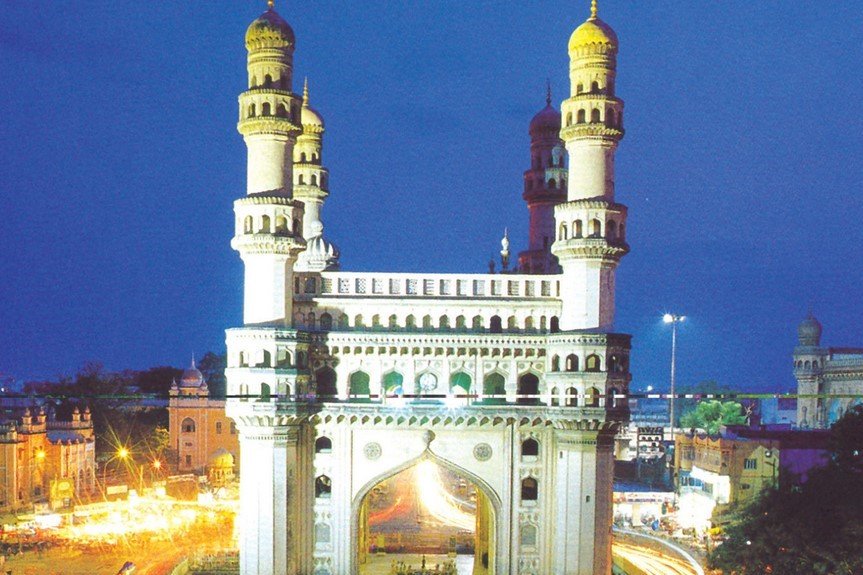
A vibrant city with the imposing Charminar at its heart, Hyderabad, the capital of Telangana, is a potpourri of history, cuisine and eclectic experiences. While its Old City area is an impressive heritage haven with iconic monuments dotting its narrow lanes, its contemporary counterpart matches pace with its cosmopolitan population. The four-sided archway of Charminar, overlooking a bustling bazaar, is the centrepiece of the city around which the township developed. Located on the banks of the Musi river on the Deccan Plateau, Hyderabad reels you in with its heritage charm, accentuated by a vibrant culinary culture, much of which owes its curation to the erstwhile Nizam rulers.
Home to the legendary and fragrant Hyderabadi biryani, the city has a bustling food scene that leaves one full but never satiated. From sampling the richly concocted Irani chai (tea) to digging into the spicy mirchi-ka-sallan, food in Hyderabad is not just an experience, but a long-lasting memory. Often called the Pearl City, a reference to the fine quality of pearls that have been traditionally traded here, Hyderabad is also the mining ground of the world-famous Kohinoor diamond. Along with the nearby city of Secunderabad, Hyderabad forms a twin city hub, which is separated by the expanse of the renowned Hussain Sagar Lake.
The city was founded by Mohammad Quli Qutub Shah in the 16th century. The Mughals invaded it in 1685 and this was followed by British interference. In 1724, the Mughal viceroy in the Deccan, Asaf Jah Nizam al-Mulk, declared independence. Thus, the Deccan kingdom, with Hyderabad as its capital, was called the princely state of Hyderabad. While Hyderabad continued to expand, its twin city, Secunderabad, grew as a British cantonment. The princely state of Hyderabad became a part of the Indian republic in 1950.
Today, Hyderabad is a thriving centre for trade, commerce and technology. Several major information technology companies have set up offices here, ensuring a steady influx of people from across India that has resulted in cosmopolitan culture. Glitzy new hotels, posh restaurants, and premium shopping complexes have come up. This, coupled with historical monuments, traditional royal cuisine, indigenous arts, and rich history, gives the metropolis a unique character.
explore experiences
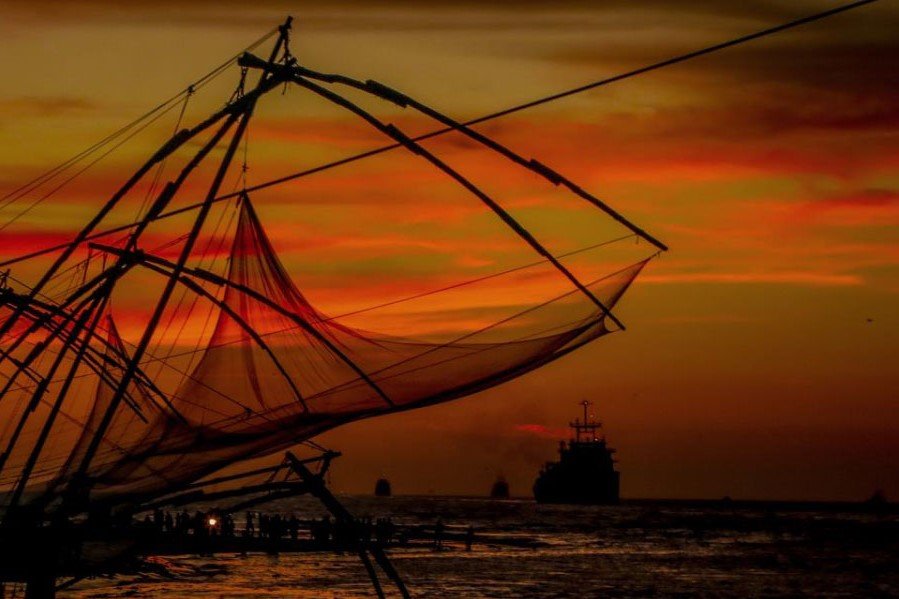
A vibrant potpourri of art, culture, food, carnivals and festivals, Kochi, sprawled along a gorgeous estuary in Kerala, is a fascinating tourist destination. Skirted by the emerald-blue Arabian Sea that laps at its golden sun-kissed beaches, the city remains suspended in time, with its colonial charm merging seamlessly with its artistic aesthetic. Established around Fort Kochi, which is the cultural nerve of the city, Kochi remains in a festive mood throughout the year. It turns into an art wonderland during the four-month-long Kochi Biennale, the largest art exhibition in India, where vibrant colours, striking images and eloquent patterns greet you at every turn. Intriguing boat rides, spiritual Onam, grand Shivaratri celebrations and the opulent Cochin Carnival, draw visitors from far and wide.
Sitting on the Malabar coast, historically, Kochi has been India's connect to the rest of the world. It was here that the Portuguese explorer Vasco da Gama first arrived, paving the way for European colonisers. The city remains steeped in its heritage, which is reflected in various Portuguese, Dutch and British forts, palaces and bungalows that are scattered throughout.
Kochi is an eclectic mix of diverse cultures, where you can sample a bit of everything. Head to the narrow alleys of Jew Town and watch the city race by you as you slowly fall in love with Jewish culture and stock up on rare antiques and exquisite handicrafts. Relax at the artsy cafes as you dig into authentic dishes, while looking at the bustling market below.
Skirted by the pristine borders of Kerala, Kochi enjoys a paradisiacal setting, making it a delight for tourists to explore. Cruise along the tranquil Vembanad Lake in Alappuzha or sail into the sunset as you admire the southern fringes of the city. You can also take a pit stop at the scenic Willingdon and Vypeen islands, which are linked by bridges and ferries to the city.
explore experiences
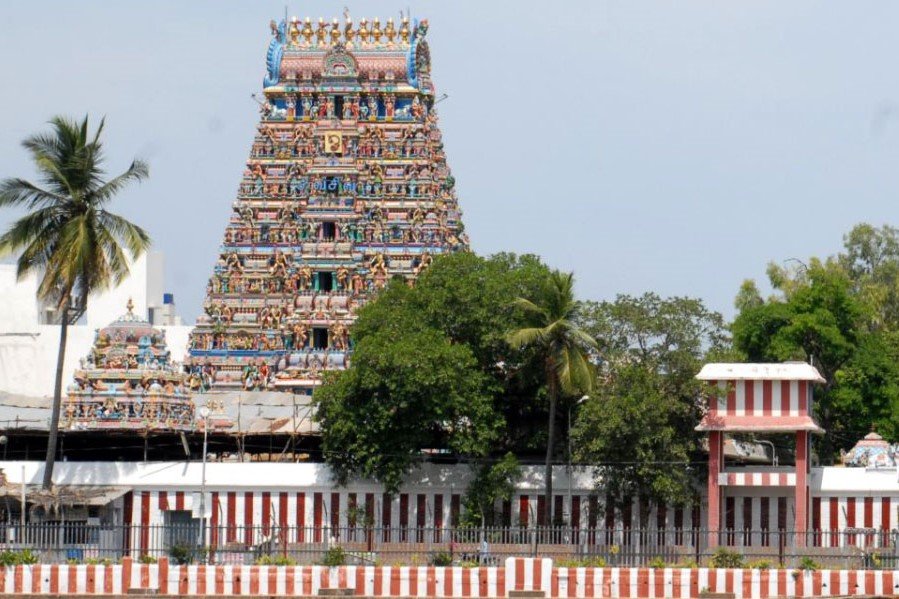
Ancient temples, vibrant arts, natural wonders and a bustling culinary scene make Chennai, the capital of Tamil Nadu, one of the most popular tourist destinations in the southern fringes of the country. Located on the Coromandel Coast, this busy metropolis was formerly called Madras. From the resplendent classical dance form of bharatnatyam to the rich flavours of its iconic cuisine and from the lustrous silk sarees traded here to the gorgeous temples and churches, Chennai is the gatekeeper of South Indian art, culture and traditions. The city is also the perfect base from which trips to other locales in Tamil Nadu can take off.
Alongside heritage, flourish natural and contemporary highlights: sprawling beaches with natural and man-made wonders, a bustling seaport, quirky cafes, a multi-transport system, theme parks, industrial hubs, hi-tech parks and universities. Its population is a heterogenous mix of locals, expats and people from the rest of India. Chennai is widely known as the “Detroit of India”, a moniker it earned because of the high concentration of automobile factories located in and around here.
There are several stories about the origin of the city’s name. Initially, during the Nayakars rule, its name was Madras, which was inspired by Madraspattinam. At that time, it was a fishing village that was situated to the north of the area that is now Fort St George. The king of Vijaynagar sold the piece of land to the British on which now stands Fort St George, which houses the Secretariat Complex of the Government of Tamil Nadu. It was the British officers who retained the name Madraspattinam. For local populace, it was more common to call the city Chennapattinam. According to another legend, the city was named Chennai in honour of Damal Chennappa Nayakkar, a Nayak ruler. In the year 1996, the government renamed it to Chennai officially and the name stands even today.
explore experiences
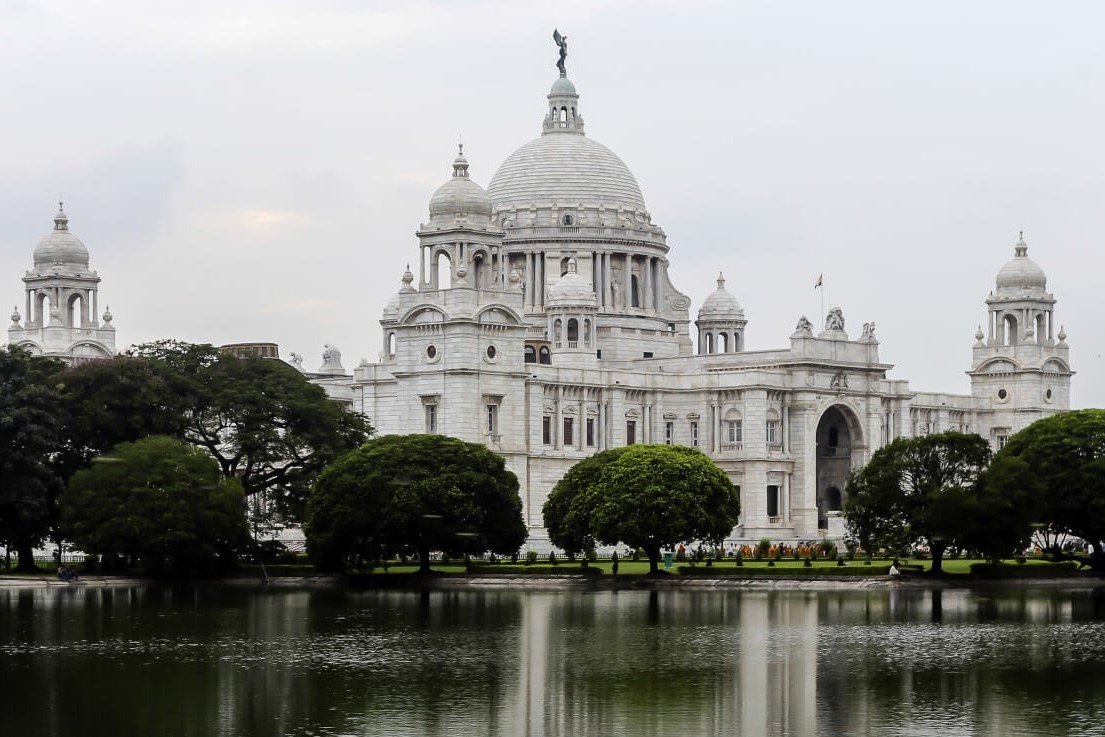
Almost like a colonial matriarch nurturing her heritage roots, the city of Kolkata, the capital of West Bengal, holds culture and tradition close to its heart. While it would give any Indian metropolis a run for its money with its grand structures, bustling markets, vibrant culinary scene, exquisite crafts and cultural sites, its historical legacy reigns supreme. Once the capital of British-India, Kolkata's colonial charm blends with its modern culture.
From slow-moving trams (the oldest in Asia) meandering around the city, racing iconic black and yellow cabs, women dressed in handwoven cotton sarees, antique tea and coffee houses hosting lengthy sessions of adda (discussions on various subjects like politics and society), legendary football clubs and old markets spilling over with products, the bustling metropolis has the laid-back soul of a quaint town. The city of joy, as Kolkata is fondly called, throbs with liveliness and festivities, which can be enjoyed throughout the year. Be it the opulent Durga Puja pandals strewn across the city or the humbly sweet Christmas celebrations at Bow Barracks or the colourful Chinese New Year festivities at Chinatown, festivals make the city a joy to visit.
To get a taste of the times gone by, visitors can sign on to heritage walks that take you through history, spirituality and colonial treks of the city. Gaze in awe at the sprawling Victoria Memorial, a pristine white beauty, as it sits proudly amidst neatly manicured lawns or take a tour of the ancestral home of poet and Nobel laureate Rabindranath Tagore, there are many interesting tidbits to mine from the heritage gold of Kolkata.
Don't forget to take the culinary trails that will introduce you to some of the most unique dishes you will ever sample. From sweet and spongy rosogolla (a cottage cheese dessert), spicy and sweet water-filled puchka (a savouy) and the delicious daab chingri (prawns cooked in green coconut) to ilish paturi (a type of steamed fish) and kosha mangsho (dry mutton curry), there's a lot to savour from the Bengali cuisine in the city. Also sample delicious cakes, a legacy of the British era, traditional Chinese dishes at Chinatown and several iconic Anglo-Indian spreads here.
Known as the cultural capital of India, Kolkata continues to spawn award-winning poets, writers, film producers and Nobel Prize winners.
explore experiences
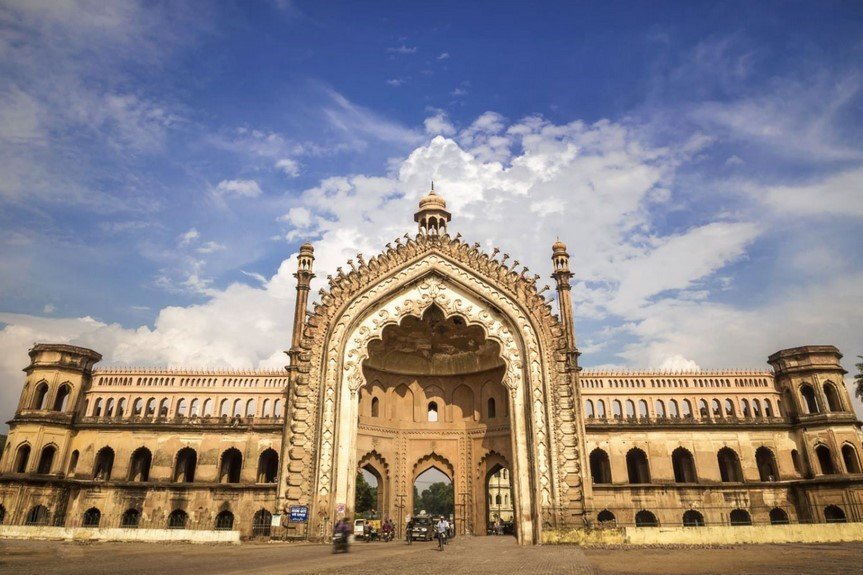
A melting pot of art, culture, cuisine and architecture, the bustling city of Lucknow, the capital of Uttar Pradesh, preserves its essence of grandeur in its kaleidoscopic experiences. From a vibrant culinary scene and exquisite historical monuments to its rich art and culture and vestiges of colonial charm, the city of nawabs, as it is popularly called, is as welcoming as is the warmth of its people.
As soon as you arrive at the historically-eminent and gorgeous Charbagh Railway Station, the city of Lucknow starts unfolding, revealing its charm at every turn. In the bylanes of old Lucknow, history whispers lost tales, while in the broad avenues of the newer suburbs, the cosmopolitan heart of the city throbs. From the grand gateways of the popular Bara Imambara to the ornate structure of Rumi Darwaza, inspired by a Constantinople gate, the city's heritage monuments unravel their mystery. While these monuments inspire awe, it's the bustling bazaars and craft galis of the city where its true soul can be found. Complementing this energetic liveliness, lie serene temples, mosques and churches.
According to a legend, the city was named after Lord Rama's younger brother Lakshmana, who had a palace in the area. Historically, the city was the seat of the replendant nawabs, who ruled the region for centuries. Most of the credit, however, goes to Nawab Asaf-ud-Daula, who moved the capital of Awadh from Faizabad to the banks of the Gomti river in 1775, sowed the seed for Lucknow’s growth. Rising in prominence, the nawabs made Lucknow the epicentre of art, culture and music. They also commissioned some of the most aesthetic buildings in India and artisans flourished. Everyone, from architects who designed the lovely structures of the city, to the chefs who created the kebabs we love so much today, prospered under the rule of the nawabs.
During the colonial era, the city of Lucknow was a strategic location. It witnessed many events of the First War of Independence in 1857, such as the Siege of Lucknow and the Kakori train incident involving revolutionaries Ashfaqullah Khan and Ram Prasad Bismil. The rich legacy of Lucknow is still alive in its culture and gives us a peek into the bygone era.
explore experiences
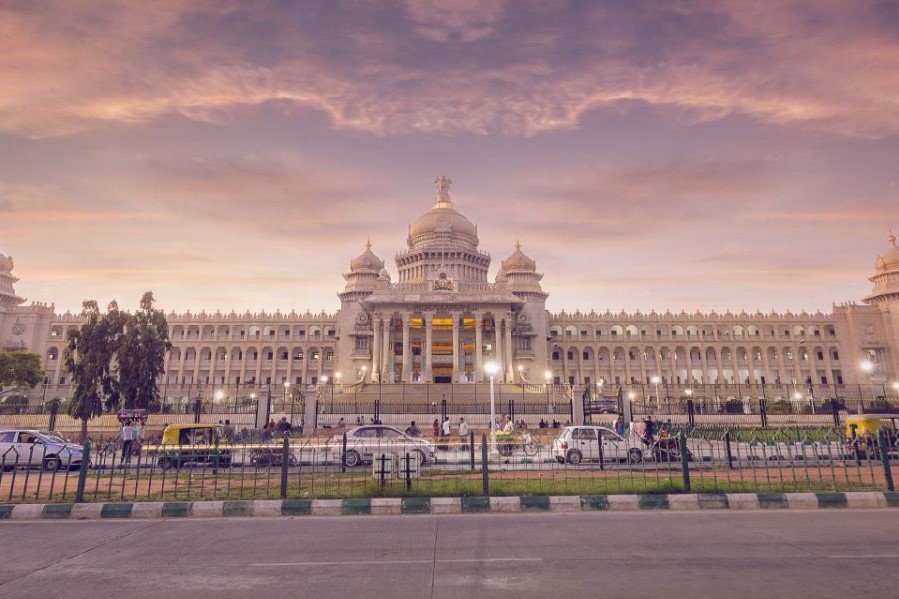
A city catering to almost all the creature comforts of a metropolitan, a pleasant year-round weather and a bustling shopping and culinary scene, Bengaluru, the capital of Karnataka, is the perfect destination to mix work with pleasure. Once famous as an ideal city for senior citizens looking for a relaxed life after retirement, today it's popular as the information technology hub of India, drawing young technocrats from across the country. Lush green parks and well laid-out gardens rub shoulders with art galleries, pubs and restaurants, giving the city a unique eclectic energy. From a sleepy cantonment area during the British era to a modern cosmopolitan, Bengaluru has had an interesting journey. Bengaluru is an ideal landing pad for shoppers, who can indulge in both street shopping and high-end retail buys. The heritage highlight of the city are the Mysore sarees, which are made of premium quality silk and sandalwood artefacts, which can be used for home decor. The city enjoys a scattering of prominent sites like the Bangalore Palace, the Attara Kacheri (High Court), St Mary’s Basilica, Tipu’s Palace, ISKCON Temple and the Bull Temple that draw tourists from far and wide. The city is known by many sobriquets like the City of Gardens, India’s Silicon Valley, Pensioners Paradise, Pub City, Pensioners’ Paradise, IT City, BT City and Pub City. It is an ideal location for tourists desirous of travelling to the hill stations and coastal towns in the southern region of the country.
explore experiences
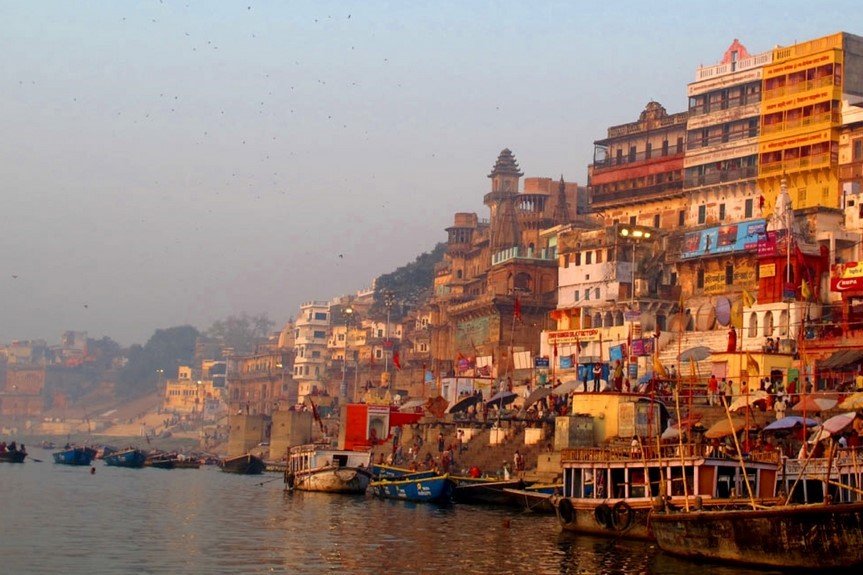
One of the oldest living inhabitations of the world, the sacred city of Varanasi or Benaras, nestled on the banks of the holy Ganges river, has been attracting pilgrims for centuries. Celebrated author Mark Twain, who visited India in the last decade of the 19th century, described the city as “older than history, older than tradition, older even than legend.”
Believed to be the abode of Lord Shiva, Varanasi is among the seven sacred cities in the country. Centuries of history, art and tradition have conflated to add colourful layers to Varanasi's aura, which is most spectacularly evident at its ghats (stepped banks of a river). An abode of travellers in search of holiness and divine providence, the ghats of the Ganges are the highlight of the spiritual scene of Varanasi. From the famous Ganga arti (a fire ritual) to cremation ceremonies, the ghats are the site of time-honoured rituals that are performed to this day.
Legend has it that Lord Shiva channelled the celestial Ganga on earth, and that is why the river is considered holy. Thousands of devotees from all over the country come to bathe in its waters as it is believed that taking a dip in the holy Ganges absolves one of their sins. It is also believed that those cremated here achieve moksha (salvation). For many, the sacred Kashi Yatra (pilgrimage to Kashi, as Varanasi was earlier called) is one of the most important rituals to undertake during their lifetime.
In recent years, the city has turned into a purveyor of philosophy, yoga, the ancient medicinal science of Ayurveda, and astrology.
Varanasi is also one of the holiest sites of Buddhism, as it was in Sarnath, which is located merely 12 km away, that Lord Buddha preached his first sermon. Jain literature, too, refers to Kashi as a holy city, as it is the birthplace of four Jain tirthankaras (saints). It is said that Kabir, a 15th-century mystic poet and saint, was also born in this city.
The city, believed to date back to 1400 BC, finds mention in the Upanishads (holy Hindu scriptures) as Benaras and is said to have been an important centre of trade and education. It eventually acquired the name Varanasi and came to occupy a special place in the Indian consciousness, especially as a bridge to the old world. Scribes have, for long, tried to capture the essence of Varanasi in books. From the couplets of Kabir to the works of prose writers like DN Khatri, Hazari Dwivedi and Jaishankar Prasad, the city has inspired a vast body of literary, scriptural, poetic and historical works produced by some of the most famous Indian writers over centuries. Famous for silk weaving, the city offers brocade sarees that are a must in most Indian brides' trousseau. The city is also famous for copper ware, brassware, wooden and clay toys, and jewellery.
Famous melody-makers, from Mughal court musicians to present-day personages like iconic sitar player Ravi Shankar, shehnai maestro Bismillah Khan and late vocalist Girija Devi have called Varanasi home. Their influence on classical and contemporary music is so strong that Varanasi also features among the ‘Cities of Music’, which has been established by UNESCO’s Creative Cities Network.
explore experiences
If stones could speak, the Khajuraho temples would create melodies! Situated in Madhya Pradesh and cradled by the Vindhya mountain range, the heritage town of Khajuraho is famed for being home to the UNESCO World Heritage Site listed temple complex that features Hindu and Jain houses of worship. These temples are famous for their stunning intricate sculptures depicting different aspects of life: spirituality, love, friendship, sports, royalty and most significantly, awe-inspiring art. Based on their geographical location, the temples are categorised into three groups: Eastern, Western and Southern. Believed to have been built in a relatively short period of time spanning over 100 years, i.e. between 950-1050 AD, the complex boasts 22 temple structures that remain from the initial group of 85. Forgotten for centuries, they were rediscovered in the 1850s and restored.
explore experiences
Divided by the picturesque and pristine Upper Lake and Lower Lake, the city of Bhopal, at the heart of Madhya Pradesh, remains suspended in time. On one side of the lakes is the bustling old walled city, which is a labyrinth of narrow streets and chowks. It has a score of bazaars that are always teeming with locals haggling with shopkeepers over sundry items, and several mosques and alleyways. Its cosmopolitan counterpart, sitting to the south of the lakes, can match the pace of any metropolis in the country. The central district is known as New Market and is characterised by shopping centres, luxurious hotels and multi-cuisine restaurants. This area sits in the shadow of the Shamla Hills, which overlook the lakes and the old city. One of the greenest cities in India, Bhopal boasts many national parks, wildlife sanctuaries and zoological parks rife with flora and fauna.
explore experiences
The pocket-sized paradise of Goa is a traveller's dream. Sun, sea, sand, spices, spirituality and seafood, along with a balmy weather, call to the soul of trekkers, backpackers, nature lovers and those who simply want to languish in its slow-paced and relaxed vibes. Located by the glistening waters of the Arabian Sea on India’s western coast, the state of Goa is renowned for its breathtaking beaches, rich culture and pristine natural beauty. Formerly a Portuguese colony, Goa offers travellers a chance to experience a unique blend of sandy shores, forests, monuments and delectable cuisine, attracting tourists across age groups.
explore experiences















